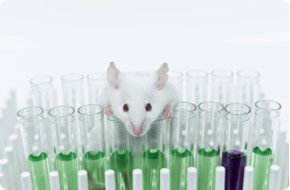Allan-Herndon-Dudley Syndrome (AHDS)
Allan-Herndon-Dudley syndrome is a rare neurological disorder that significantly impairs brain development, leading to moderate to severe intellectual disabilities and motor function issues. This condition, found only in males, affects developmental processes from the prenatal stage onward. At our company, we've assembled a team of seasoned professionals with a wealth of experience in navigating drug and therapy development challenges specific to AHDS.
Introduction to AHDS
Allan-Herndon-Dudley Syndrome (AHDS) is a very rare X-linked genetic disorder marked by intellectual disability, profound hypotonia, and distinctive facial features. It is caused by mutations in the SLC16A2 gene, responsible for encoding the MCT8 thyroid hormone transporter. The prevalence of AHDS is estimated to be fewer than 1 in 1,000,000 live births, highlighting its extreme rarity.
 Fig. 1 Genomic organization of MCT8/SLC16A2. (Schwartz, C.E. and Stevenson, R.E., 2007)
Fig. 1 Genomic organization of MCT8/SLC16A2. (Schwartz, C.E. and Stevenson, R.E., 2007)Pathophysiology of AHDS
AHDS is a neurological disorder caused by mutations in the MCT8 gene, which encodes the monocarboxylate transporter 8 (MCT8) responsible for transporting the active thyroid hormone T3 into neurons. The lack of functional MCT8 disrupts thyroid hormone transport, leading to a deficiency of T3 in the brain and subsequent
neurological impairments.
The pathology of AHDS is characterized by elevated serum T3 levels and low T4 levels due to impaired thyroid hormone metabolism. This imbalance results from the body's attempt to compensate for reduced T3 uptake in the brain by increasing T3 production and release from the thyroid gland.
 Fig. 2 Diagrammatic illustration of thyroid hormone transport and deiodination within a target cell. (Schwartz, C.E. and Stevenson, R.E., 2007)
Fig. 2 Diagrammatic illustration of thyroid hormone transport and deiodination within a target cell. (Schwartz, C.E. and Stevenson, R.E., 2007)Biomarker Development of AHDS
Biomarker development is crucial for the early diagnosis and effective management of AHDS.
- Serum T3 Levels: Individuals with AHDS typically exhibit significantly elevated serum T3 levels due to MCT8 gene mutations affecting T3 transport into the brain, prompting the body to increase T3 production and release.
- Sex Hormone-Binding Globulin (SHBG): Elevated SHBG levels in AHDS individuals suggest liver exposure to high T3 levels, indicating tissue-specific thyroid hormone effects.
- Lactic Acid and Ammonia: Increased serum levels of lactic acid and ammonia have been observed in AHDS individuals, potentially linked to muscle metabolism abnormalities and thyroid hormone imbalance
Small Molecular Drug Development of AHDS

Diiodothyropropionic Acid (DITPA), a synthetic T3 analogue, bypasses the defective MCT8 transporter, normalizing serum T3 levels and improving peripheral tissue biomarkers. However, initial studies indicate that DITPA does not significantly improve body weight or neurocognitive outcomes.

Triac (Triiodothyroacetic Acid), can be taken up by cells independently of MCT8. Preclinical studies show Triac promotes normal brain development and normalizes thyroid hormone levels, with early clinical trials indicating potential in enhancing dendritogenesis and overall brain health.
Our Services
Our company adopts a collaborative approach, partnering closely with clients to create tailored and innovative therapy strategies for AHDS. Our focus on customized strategies ensures that we meet your individual needs with the highest level of support and guidance.
Platforms of AHDS Therapy Development

Animal Models of AHDS
We have considerable expertise in developing and employing animal models that accurately replicate the disease characteristics and therapeutic responses seen in AHDS. These models are instrumental in investigating the underlying mechanisms and assessing the safety and effectiveness of prospective therapies with precision.

Non-Genetically Engineering Models
They are biological systems used in research that do not involve the manipulation or alteration of an organism's genetic material.
Optional Models:Thyroid Hormone Manipulation Model; propylthiouracil (PTU) Induced Model
Genetically Engineering Models
Genetically engineering models involve the manipulation of genetic material to study specific disease mechanisms and therapeutic interventions.
Optional Models:Pax1un-ex Mice Model; MCT8 Knockout Mice Model; MCT8/OATP1C1 Double Knockout Mice Model; Humanized MCT8 Mice Model

Moreover, we provide a variety of detailed animal model services focused on particular signaling pathways and molecular targets.
If you are interested in our services, please don't hesitate to contact us.
References
- Schwartz, C.E. and Stevenson, R.E., "The MCT8 thyroid hormone transporter and Allan-Herndon-Dudley syndrome." Best Pract Res Clin Endocrinol Metab, (2007). 21(2): p. 307-321.
- Beheshti, R., et al., "Allan-Herndon-Dudley Syndrome: A Novel Pathogenic Variant of the SLC16A2 gene." Cureus, (2022). 14(1): p. e21771.
All of our services and products are intended for preclinical research use only and cannot be used to diagnose, treat or manage patients.
